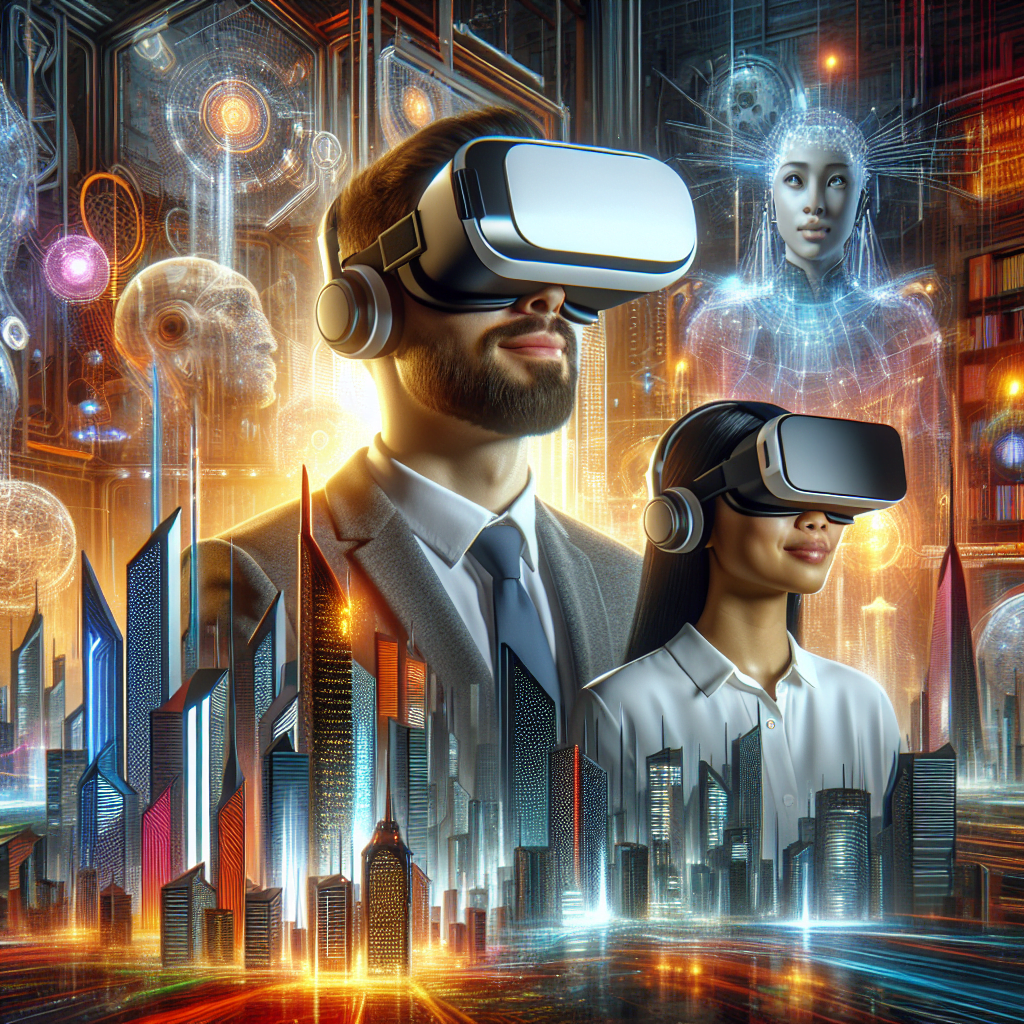Table of Contents

How AI is Revolutionizing Architectural Visualization
AI-Driven VR Walkthroughs for Building Designs
Imagine this: your client isn’t just looking at static 2D blueprints; they’re walking through their future home, experiencing the flow of space, the play of light, and the textures of materials firsthand. This is the power of AI-driven VR walkthroughs.
Here’s how AI enhances the experience:
- Realistic Rendering: AI algorithms can process vast datasets of architectural designs and real-world imagery to generate incredibly realistic and detailed VR environments.
- Dynamic Lighting and Shadows: AI can simulate natural lighting conditions, casting accurate shadows and reflections that bring the virtual space to life.
- Interactive Elements: Clients can open doors, turn on lights, and even rearrange furniture in the virtual environment, giving them a true sense of ownership and control.
Predictive Analytics for Client Engagement in Architecture
AI doesn’t just enhance the visual experience; it also provides valuable insights into client preferences. By tracking user interactions within the VR environment, AI algorithms can identify design elements that resonate most with clients. This data can then be used to:
- Refine Designs: Architects can use these insights to make data-driven design decisions, ensuring the final product aligns with client expectations.
- Personalize Presentations: AI can tailor presentations to individual client preferences, highlighting features they’re most likely to find appealing.
- Improve Communication: By understanding client priorities, architects can communicate more effectively and address potential concerns before they escalate.
The Best AI Tools for VR in Architecture
The market for AI-powered VR software is rapidly evolving, but here are a few leading platforms that architects are using today:
- Enscape: Known for its real-time rendering capabilities and seamless integration with popular design software like Revit and SketchUp.
- Twinmotion: Offers high-quality visuals and intuitive controls, making it a good option for architects new to VR.
- Lumion: Provides a vast library of 3D assets and effects, allowing for quick and easy creation of immersive presentations.
Real-World Applications: A Toronto Success Story
At Toronto Digital, we recently helped a local architecture firm win a major residential project using AI-powered VR. The firm was competing against several others, and they knew they needed to deliver a presentation that would truly captivate the client.
We worked closely with the architects to create a stunning VR experience that allowed the client to virtually walk through their future home. The client was blown away by the level of detail and realism, and they were able to experience the space in a way that simply wouldn’t have been possible with traditional presentations. Needless to say, the firm won the project, and they credit the AI VR presentation as a key factor in their success.
Potential Challenges and Solutions
While the benefits of AI-powered VR are clear, there are also some potential challenges to consider:
- Cost: High-end VR equipment and software can be expensive, especially for smaller firms. However, the cost of these technologies is decreasing, and there are now more affordable options available.
- Technical Expertise: Creating immersive VR experiences requires a certain level of technical skill. However, many software providers offer training and support to help architects get up to speed quickly.
- Client Adoption: While VR is becoming more mainstream, some clients may still be hesitant to embrace this technology. It’s important to educate clients about the benefits of VR and to make the experience as user-friendly as possible.
Conclusion
AI-powered VR is transforming the way architects design, present, and win projects. By immersing clients in virtual environments, architects can communicate their vision more effectively, gather valuable feedback, and create truly unforgettable experiences.
If you’re looking to elevate your architectural presentations and gain a competitive edge, AI VR is an investment worth considering. Contact Toronto Digital today to learn how we can help you harness the power of this game-changing technology.
FAQs
- What are the minimum hardware requirements for running AI-powered VR presentations?
The specific requirements will vary depending on the software and the complexity of the VR environment. However, in general, you’ll need a powerful gaming PC or laptop with a dedicated graphics card, as well as a VR headset like the Oculus Rift S or HTC Vive Pro.
- Can AI VR presentations be used for exterior visualizations as well?
Absolutely! AI VR is equally effective for showcasing exterior spaces. Clients can virtually explore the surrounding landscape, experience different times of day, and get a feel for the building’s relationship to its environment.
- How long does it take to create an AI-powered VR presentation?
The time required will depend on the size and complexity of the project, as well as the level of detail desired. However, with the right tools and expertise, it’s possible to create stunning VR experiences in a matter of days or even hours.
For more insights, check out our blog on AI for Salons: Intelligent Customer Retention Strategies or explore our portfolio to see how we’ve helped other businesses succeed.
If you have any questions or need assistance, feel free to contact us. For more information about our services, visit our homepage.